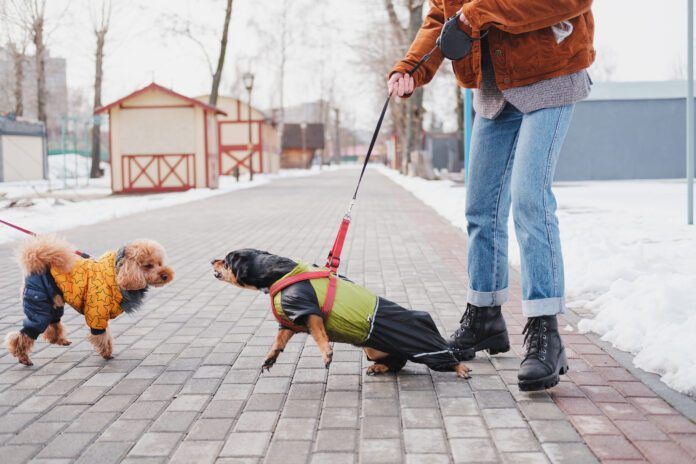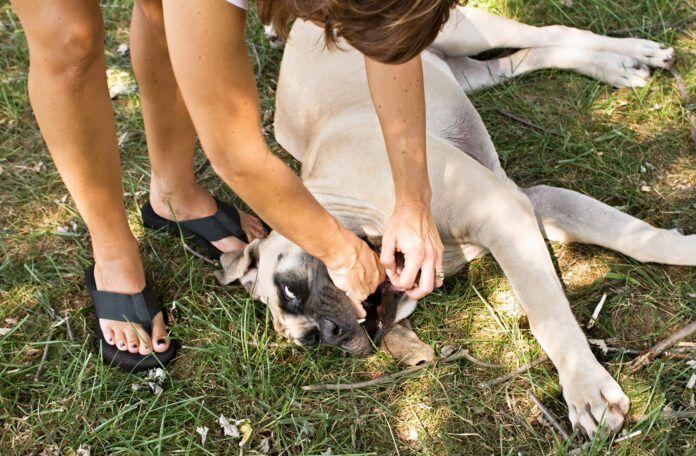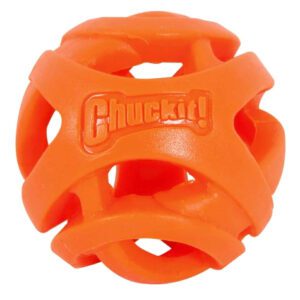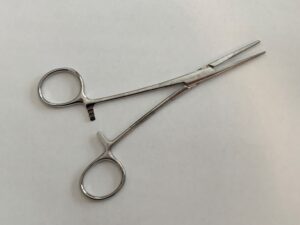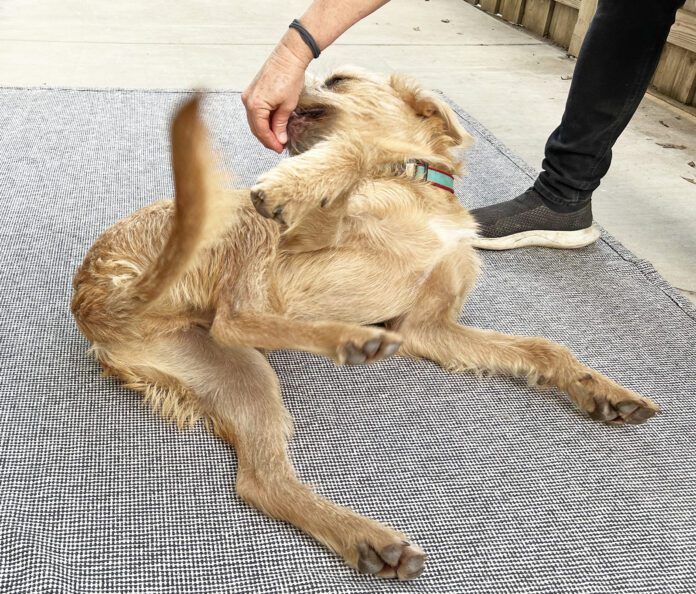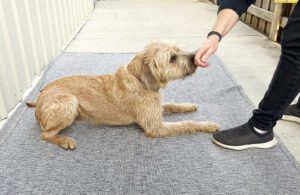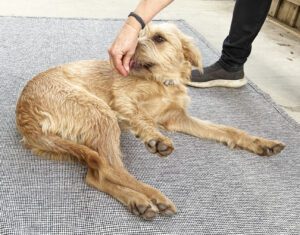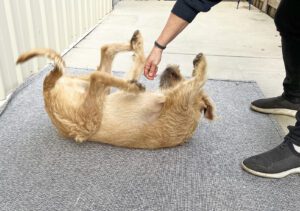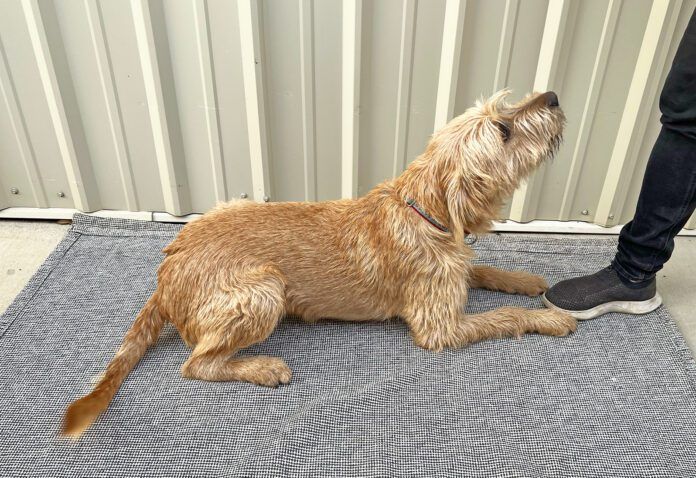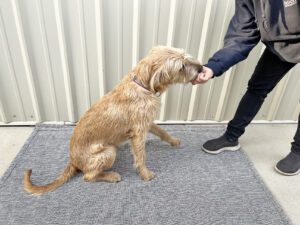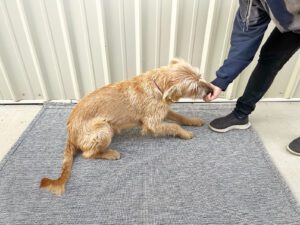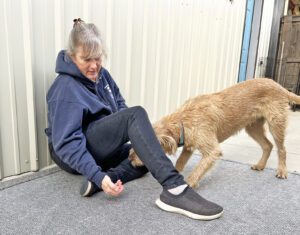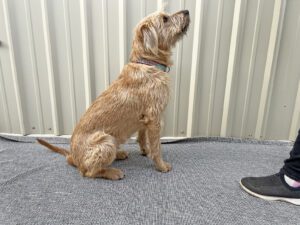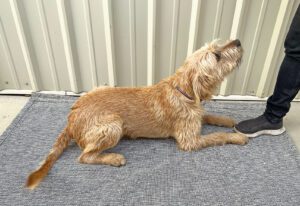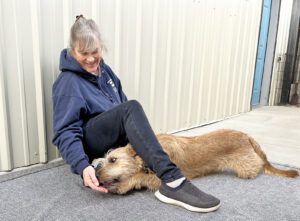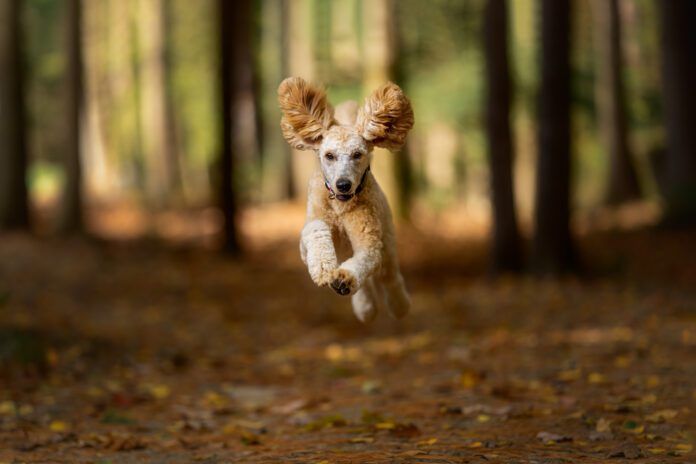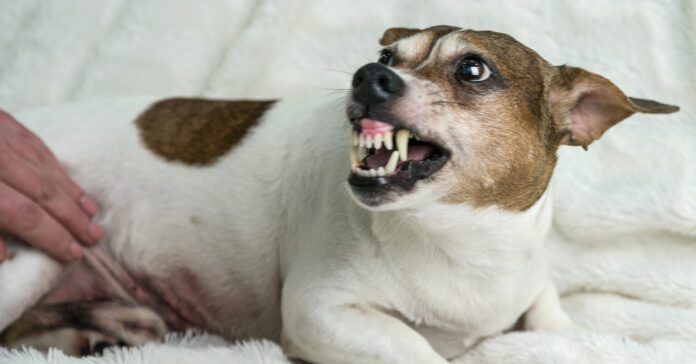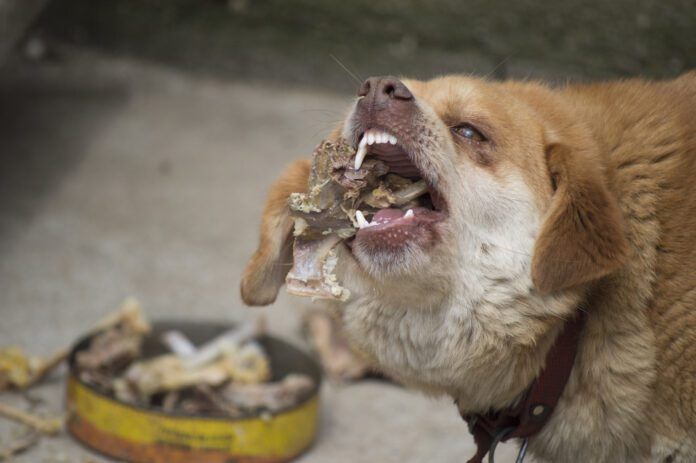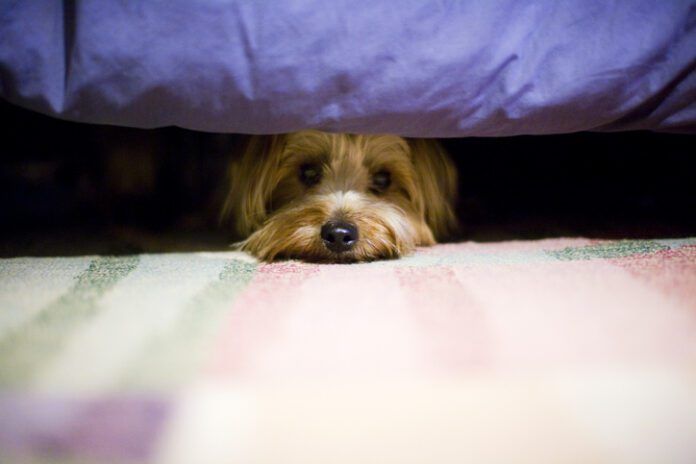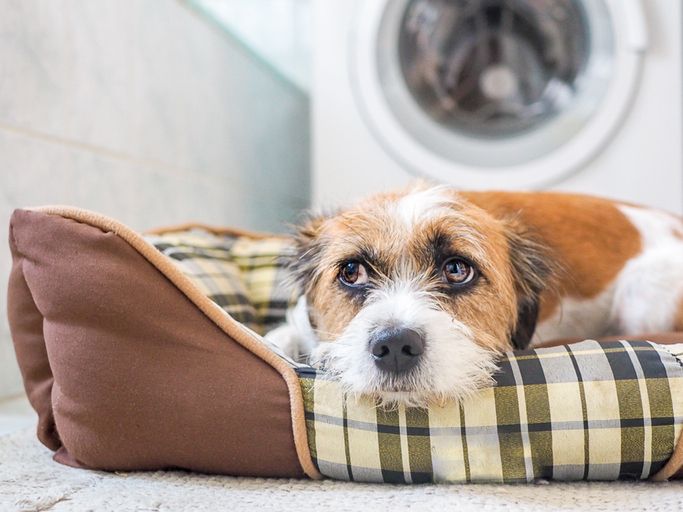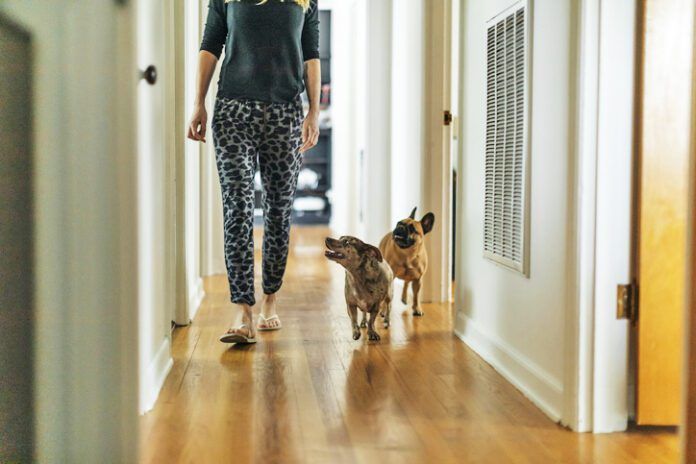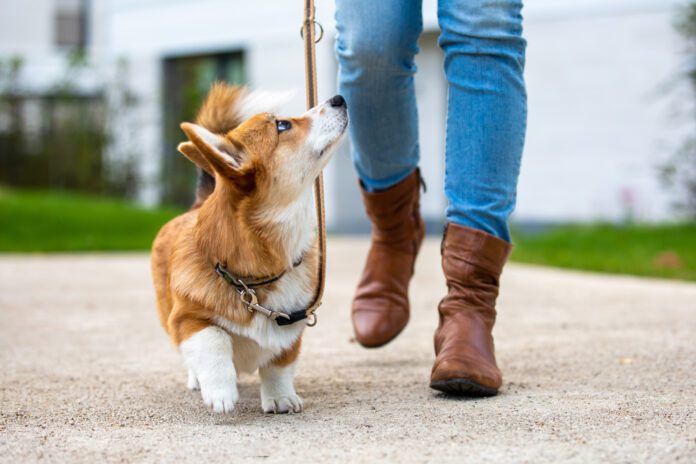When you adopted your dog, you were probably looking forward to nice, long, stress-relieving walks together. But instead of the peaceful strolls you had imagined, your dog is becoming increasingly aggressive toward other dogs you encounter on your walks. Why is this happening? And what can you do about it?
Dogs are a social species, but that doesn’t mean they all get along with each other. After all, we humans are a social species, and we don’t all get along!
There are several reasons why your dog might be acting aggressive when he’s on leash and sees other dogs:
- Frustrated on leash. This can happen with even a very confident, friendly, social dog who is accustomed to greeting other canines he meets while on leash but is prevented from doing so. His resulting frustration may cause him to become reactive.
Reactivity is defined as an abnormal level of arousal in response to a normal stimulus. While frustration reactivity looks seriously aggressive, in many cases, the frustrated greeter is socially appropriate if allowed to interact with other dogs off-leash. But be careful! Other dogs may take offense at your dog’s level of arousal and respond with defensive aggression. You’ll do better to manage and/or modify your dog’s arousal so he is reasonably calm before allowing dog-dog interactions.
To avoid leash frustration, prevent the development of frustration-causing expectations by never allowing on-leash greetings. I recommend that you allow your friendly dog to interact with others only when the dogs are off-leash and in appropriate, safely enclosed areas.
- Defensive on leash. This occurs with a dog who is mildly to significantly fearful of other dogs and feels threatened and trapped when he is on leash and approached by others.
Puppies may shut down at first when approached by other dogs, but as dogs mature and gain confidence, they may start to offer “distance increasing behaviors” including growls, barks, and lunges toward other dogs. When other dogs leave a barking, lunging dog alone in response to his “go away” message, the behavior is reinforced, and he’s convinced this is a successful survival strategy. Behaviors that are reinforced generally increase, so the intensity of his aggressive behavior escalates over time.
As with frustrated greeters, this behavior is less likely to occur when the defensive dog is off leash, especially with a socially appropriate dog who respects his “go slow” signals. Because he knows he can move away and doesn’t feel trapped by the leash, he is less stressed about the encounter, and less likely to feel the need to aggress.
- Offensively aggressive on leash. Sadly, some dogs truly don’t like other dogs and look for opportunities to attack them. This behavior can appear even in a young puppy and can be the most challenging to manage and modify of the three types of on-leash aggression.
While the other two types of leash-aggressive dogs are often compatible with other dogs when not on their leashes, the offensively aggressive dog is generally just as much of a threat off leash as on leash. Fortunately, it’s also the least common of the three types of leash-aggressive dogs.
How to Modify On-Leash Aggression
All of the following protocols can be utilized with each of the three types of on-leash aggression described above.
- Counter-Conditioning and Desensitization (CC&D). This is my favorite protocol for all three types of on-leash aggression, as it changes your dog’s association with the stimulus (the other dog) that is creating an undesirable emotional response.
Working at a sub-threshold distance (where your dog is aware of the presence of the other dog but not barking, lunging, or otherwise acting aggressive), each time your dog looks at the other dog, you feed him a very high-value treat to convince him that other dogs make treats happen (see sidebar). Be patient, this modification protocol takes time!
- Constructional Aggression Treatment (CAT). This is a more complicated protocol than CC&D, because you need the help of another person and dog, but it can be very effective. The dog with aggressive behavior is exposed to another dog/handler pair at a sub-threshold distance, and any calm choices he makes (turning away, looking at his handler, looking at the other dog calmly, etc.) are reinforced by having the other dog/handler pair move away.
This shows your dog that a calm, non-aggressive behavior can make the unwanted dog go away. When your dog’s calm behavior is consistently reinforced by moving the other dog away, your dog learns to behave calmly in the presence of other dogs – and eventually no longer feels the need to try to make them go away.
A reverse CAT procedure is used for frustrated greeters: calm behavior makes the other dog come closer.
For more information about CAT, see “Constructional Aggression Treatment Can Improve Behavior,” WDJ December 2009.
- Simple operant behaviors. Teaching these easy operant behaviors can help you manage his behavior in the presence of other dogs. Because these are fun, they not only help him be attentive to you, but also put his brain in a happy place so he is less stressed about the other dogs. These include:
- Touch: Your dog cheerfully touches his nose to your hand on cue. (See “On Target Training,” September 2021.)
- Walk Away: Your dog does a 180-degree spin and romps away from the other dog when you give a “Walk Away” cue. (See “Walk Away,” September 2018.)
- Find It: Your dog gleefully runs to you and looks on the ground between your feet for treats when you use your “Find it” cue. If you already use “Find it” to look for things a distance away from you, use “Feet” for this one. (See “Understanding Your Dog’s Nose,” September 2019.)
On-Leash Success
Some leash-aggressive dogs may never be candidates for dog park play, but with commitment to management and a good modification program (with the help of a qualified force-free professional if needed), you should be able to enjoy the peaceful walks that you were hoping for when you first adopted him.
Here’s how you can use CC&D to improve how your dog feels, and eventually behaves, around other dogs on leash:
- Determine the distance at which your dog can be in the presence of another dog and be alert or wary but not aggressive. This is the sub-threshold distance.
- Have your dog on leash where other dogs will occasionally pass by at a sub-threshold distance. The instant your dog sees the other dog, start feeding bits of chicken (or another high-value treat). Let him look and then feed him treats. Look again; feed. Over and over.
- The moment that the other dog is out of sight, stop feeding treats to your dog. The treats appear again only when your dog notices another dog’s appearance.
- Repeat steps 1-3 until seeing a dog at that distance consistently causes your dog to look at you with a “Yay! Where’s my chicken?” expression. This is a conditioned emotional response (CER); your dog’s association with a dog at threshold distance is now positive instead of negative.
- Gradually move your dog closer to where other dogs will appear, achieving the CER at each new distance, until your dog can happily and calmly be near other dogs.
- At your original threshold distance, do CC&D where more dogs will be present and more active – perhaps outside a dog park or outdoor training class. Gradually decrease distance, attaining CERs, until your dog is delighted to have more dogs and more activity in close proximity.
- When your dog remains calm around other dogs in controlled environments, you’re ready for real-world encounters. Take him for walks in your neighborhood, using generous CC&D treats any time he sees another dog. Continue to manage the situation by moving away as needed, until you are confident he can pass by other dogs without reacting.


